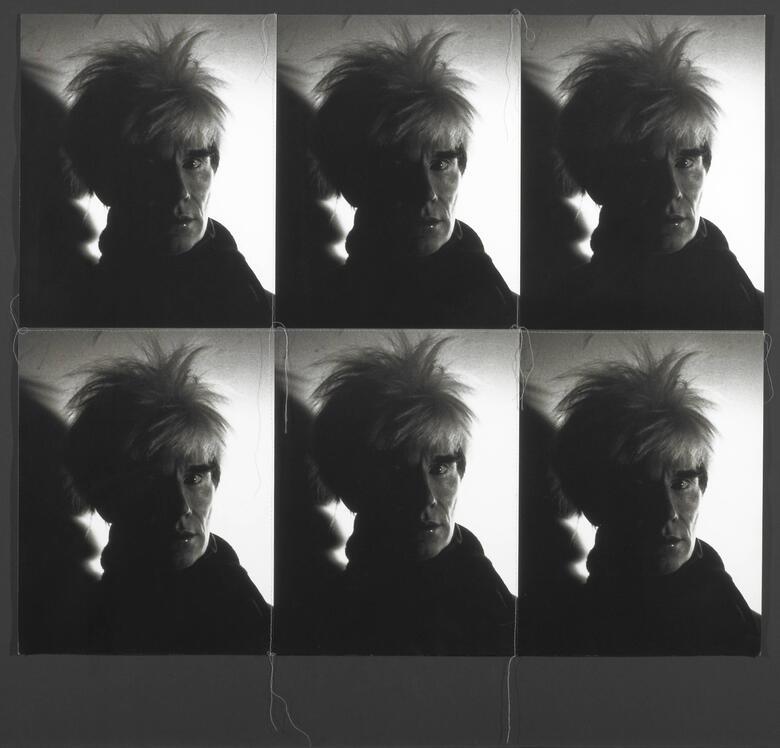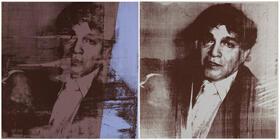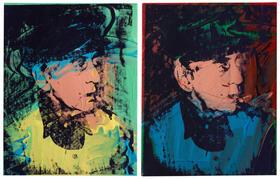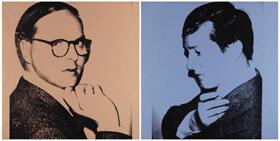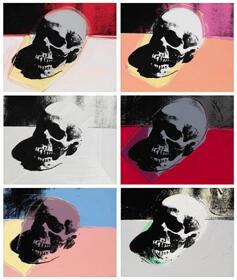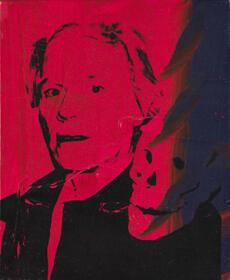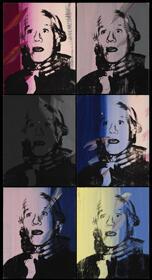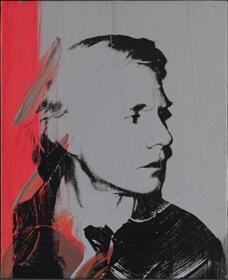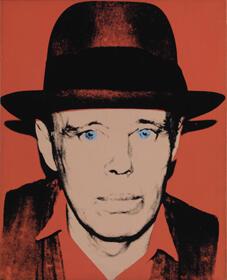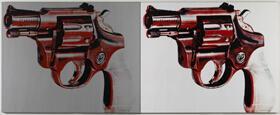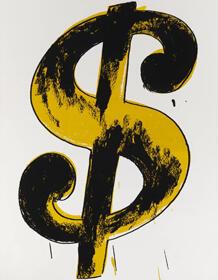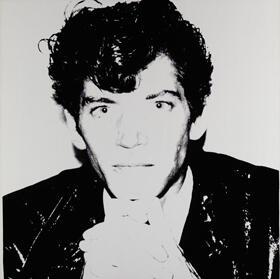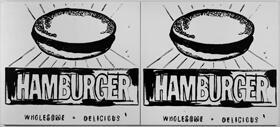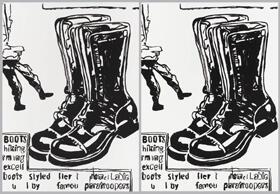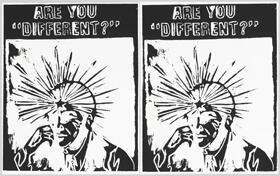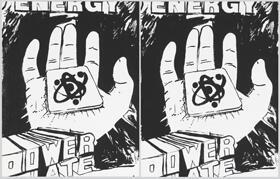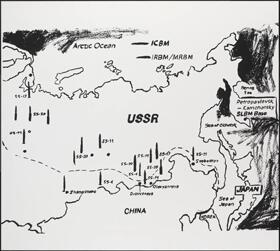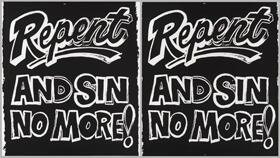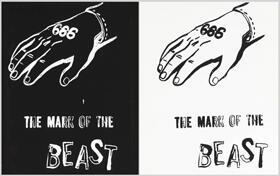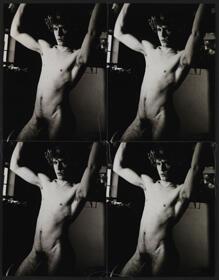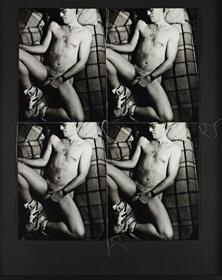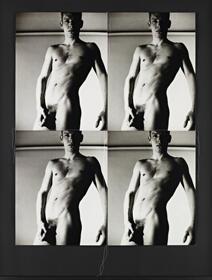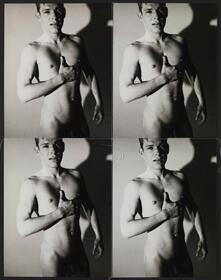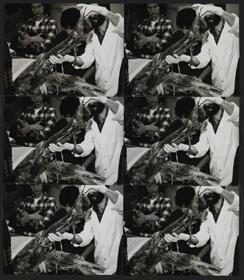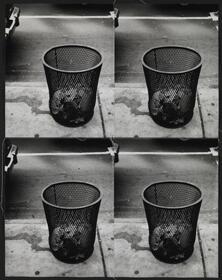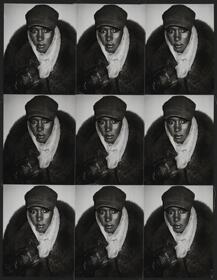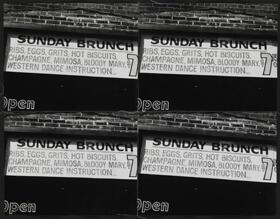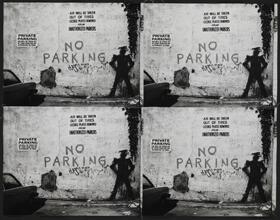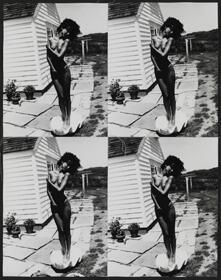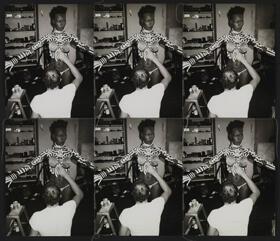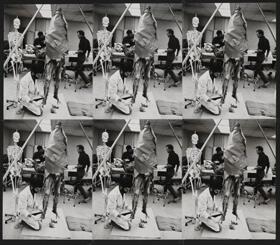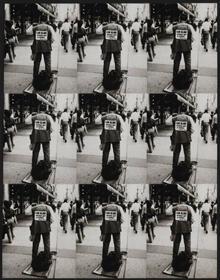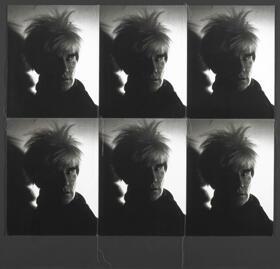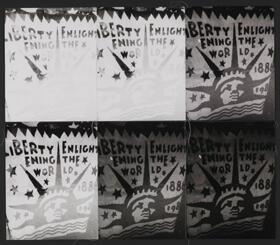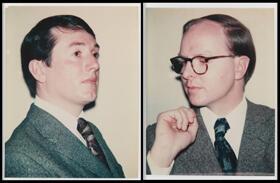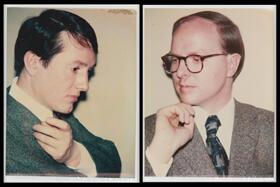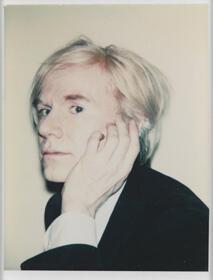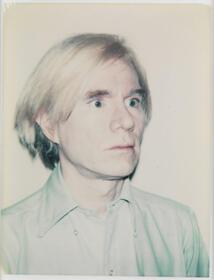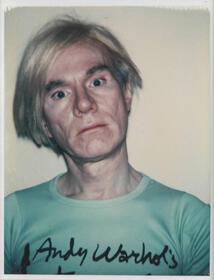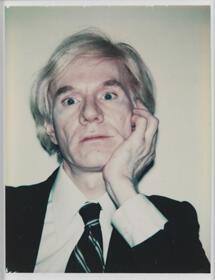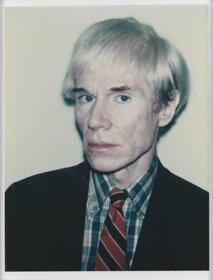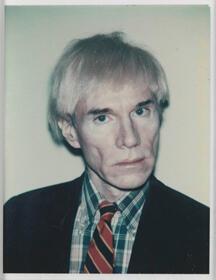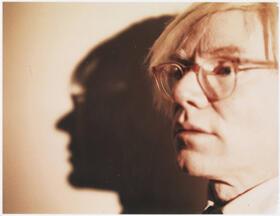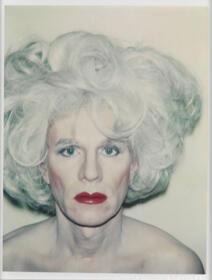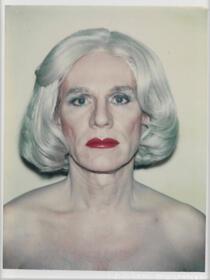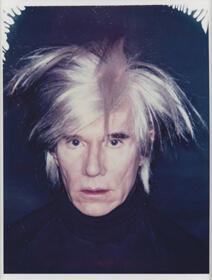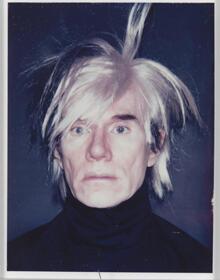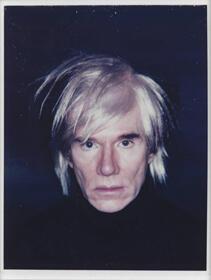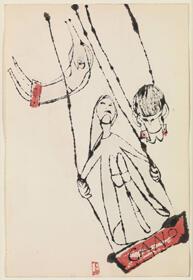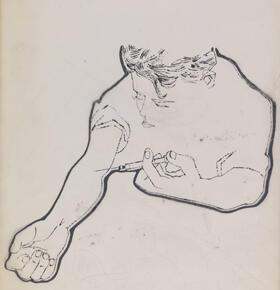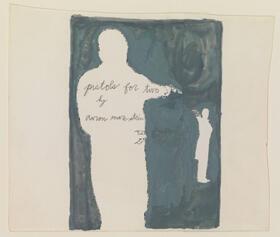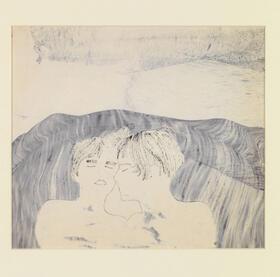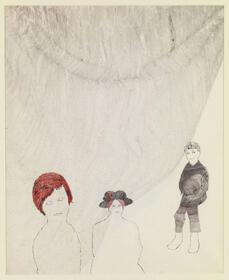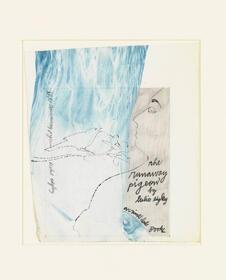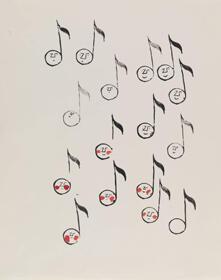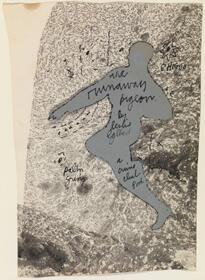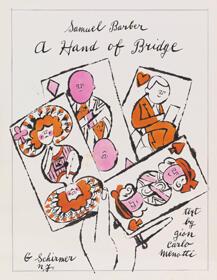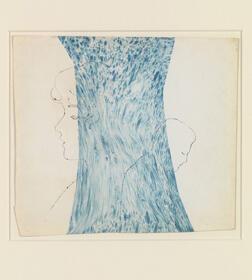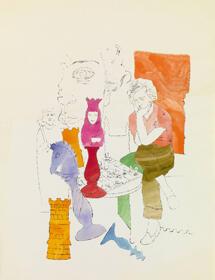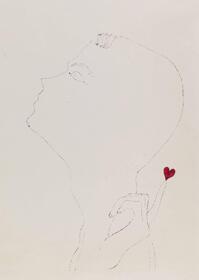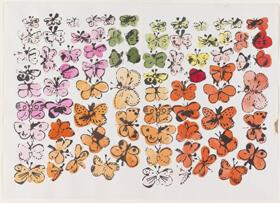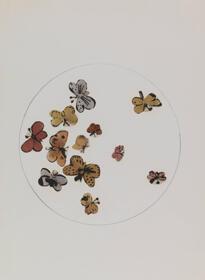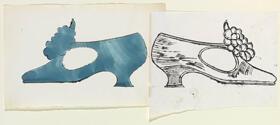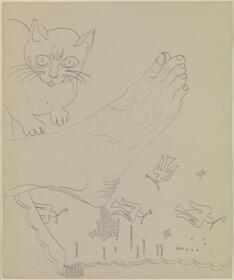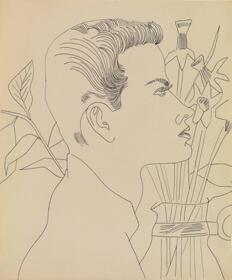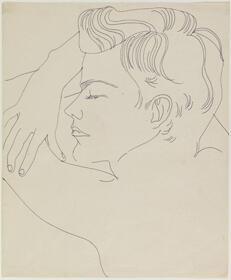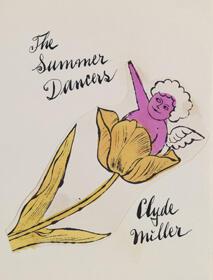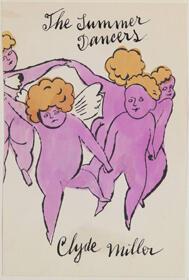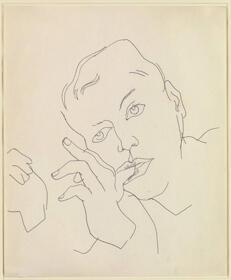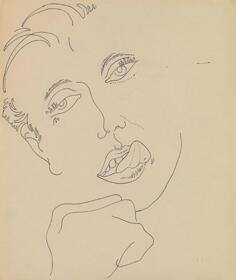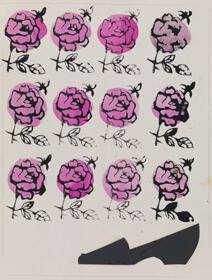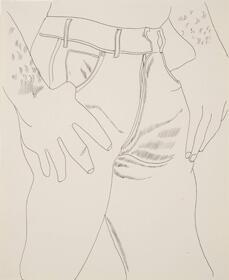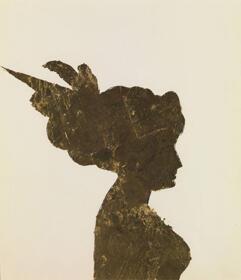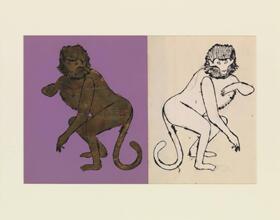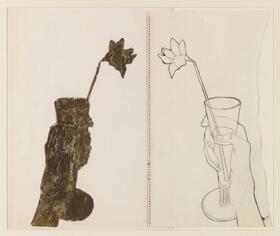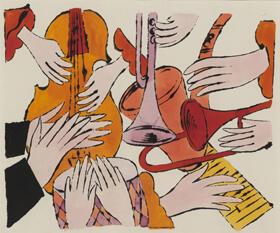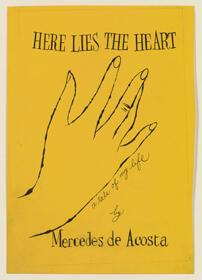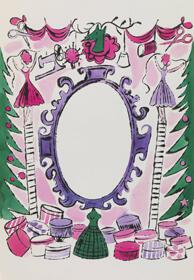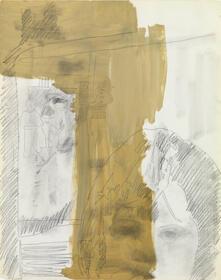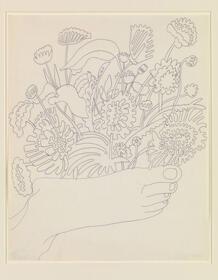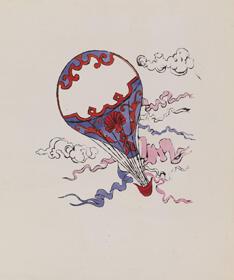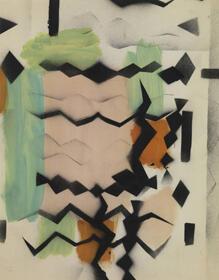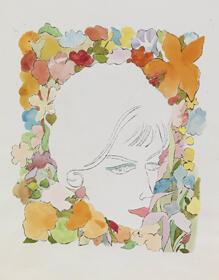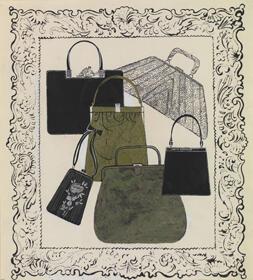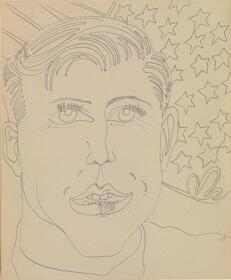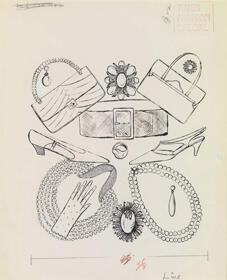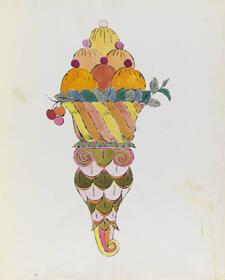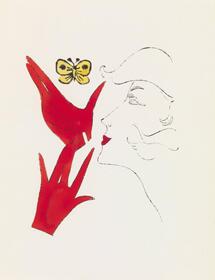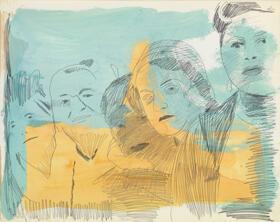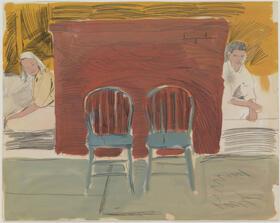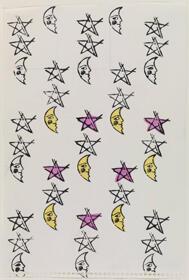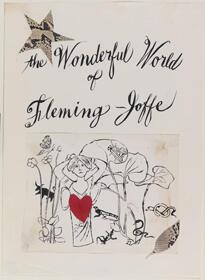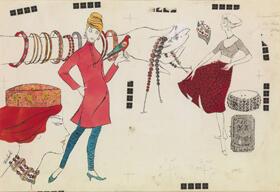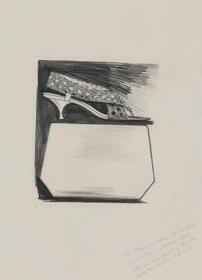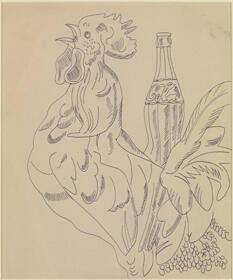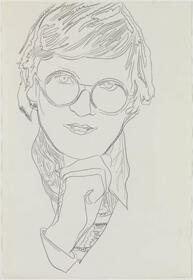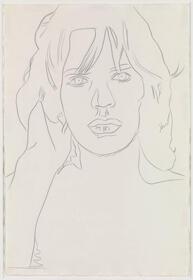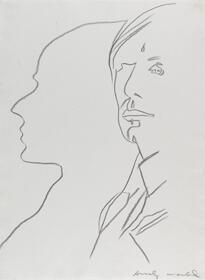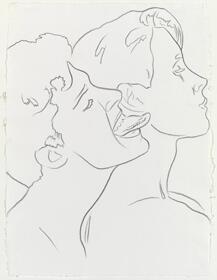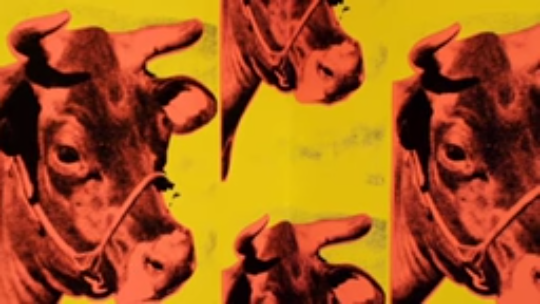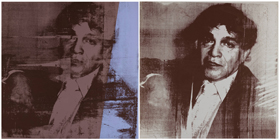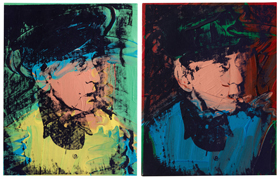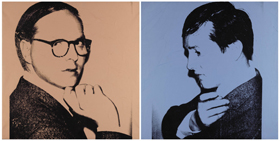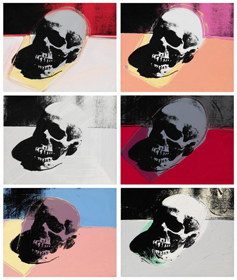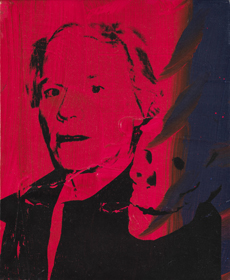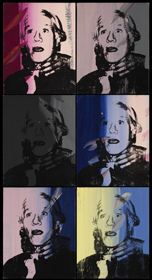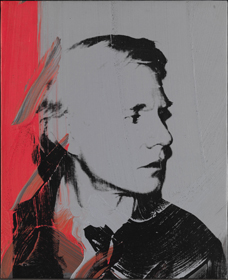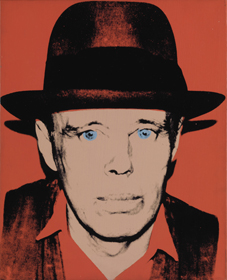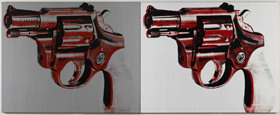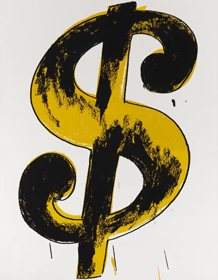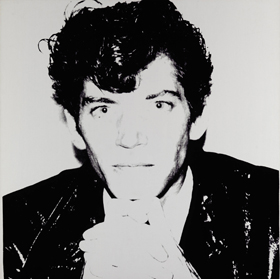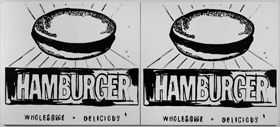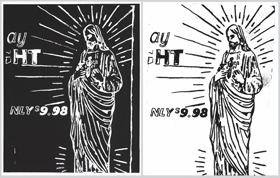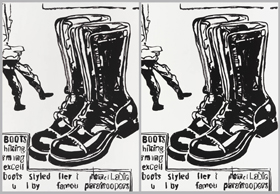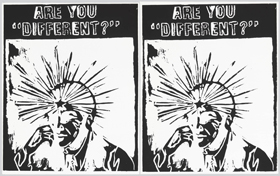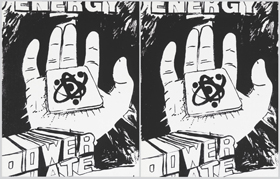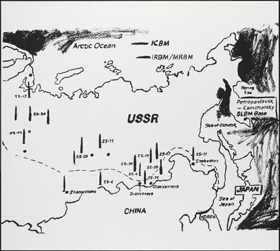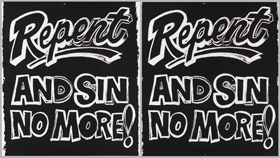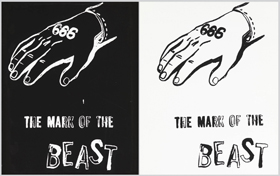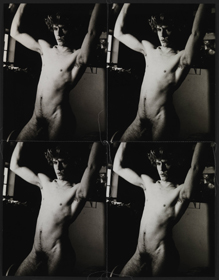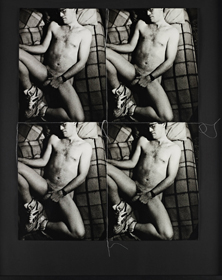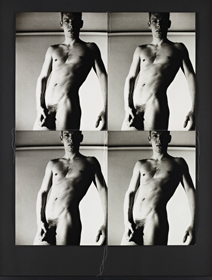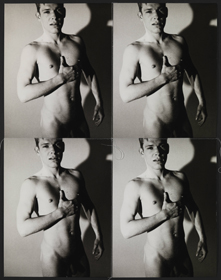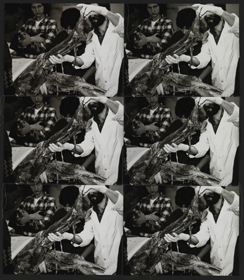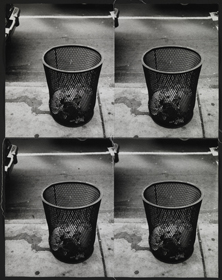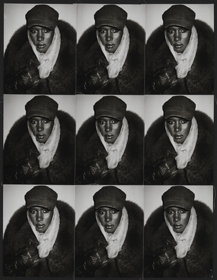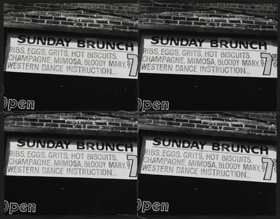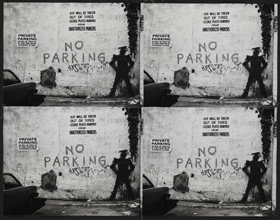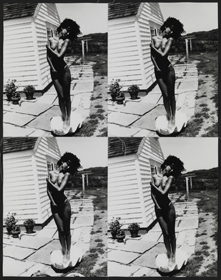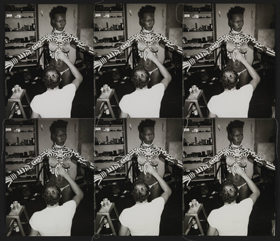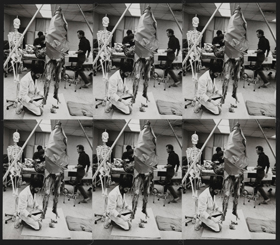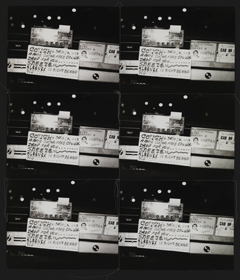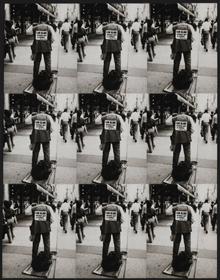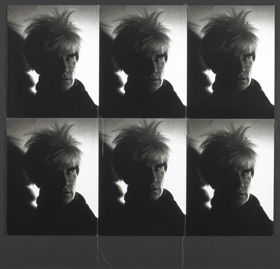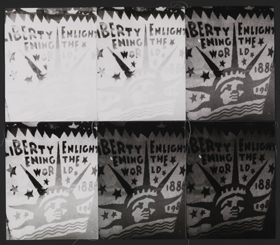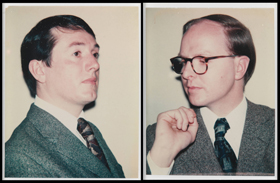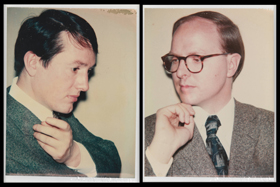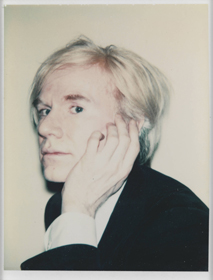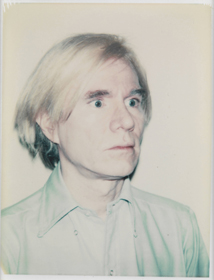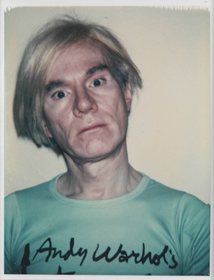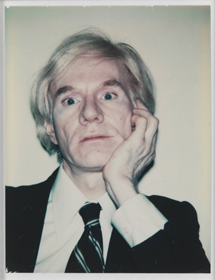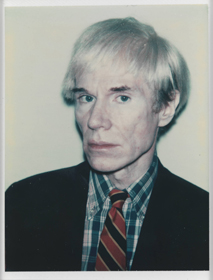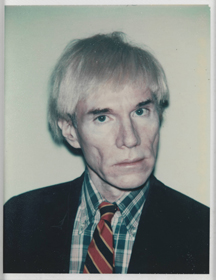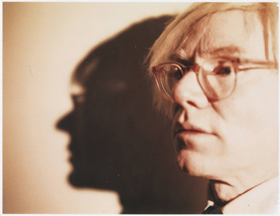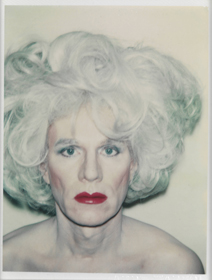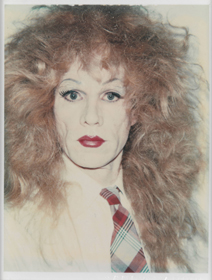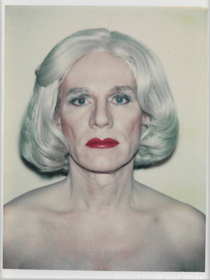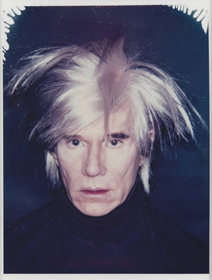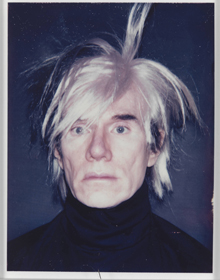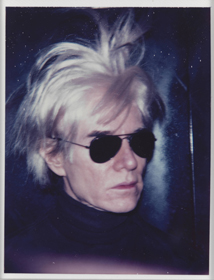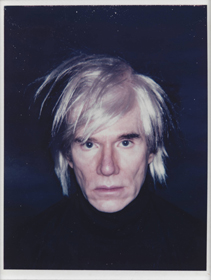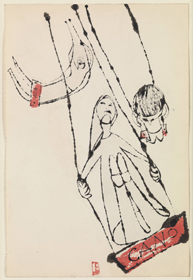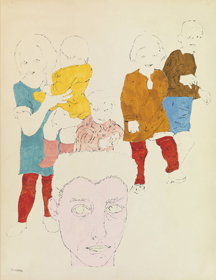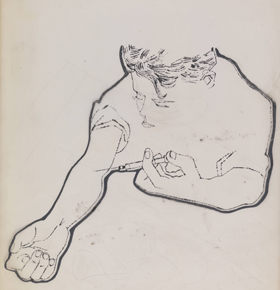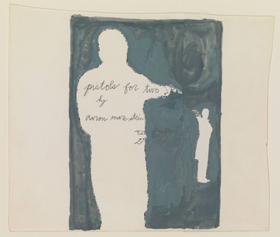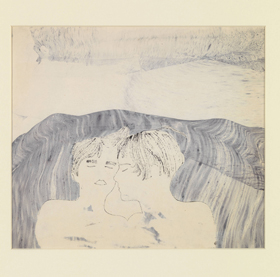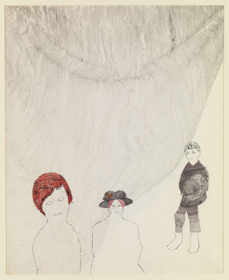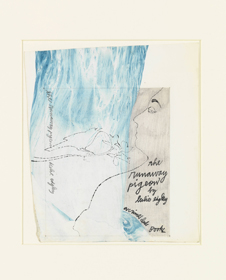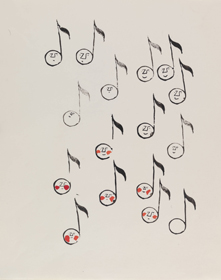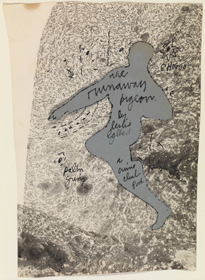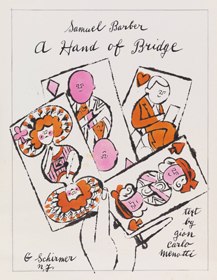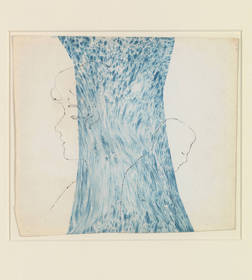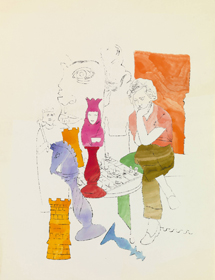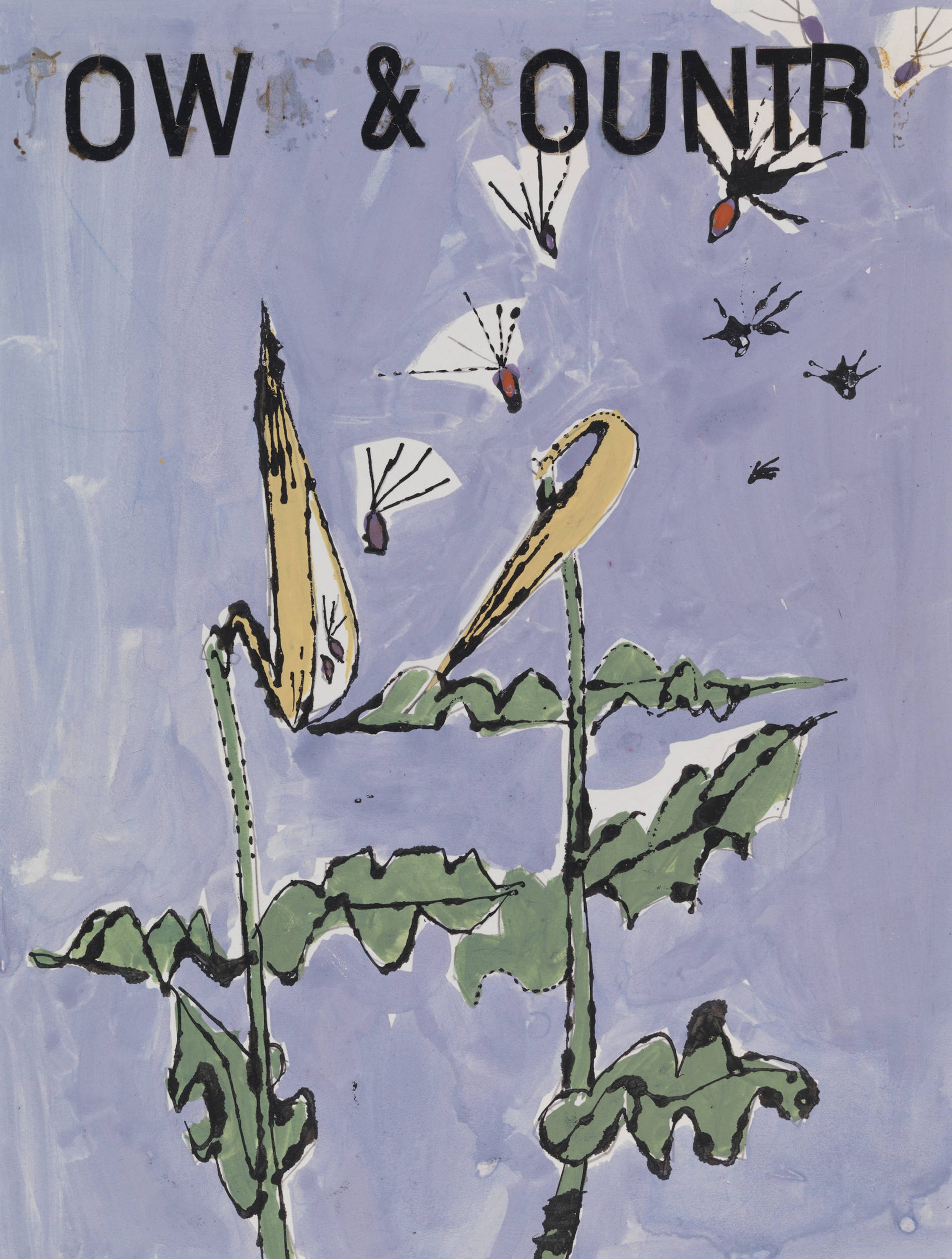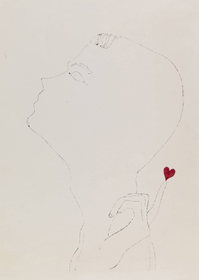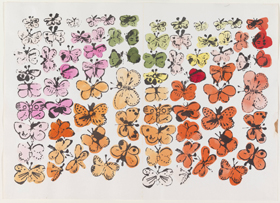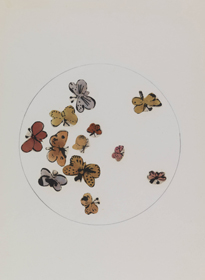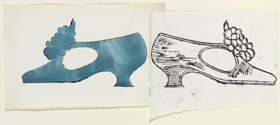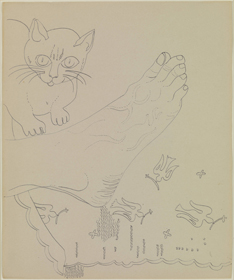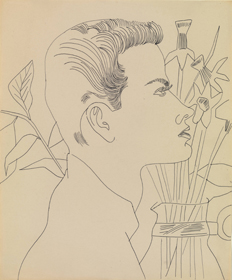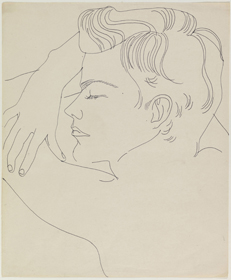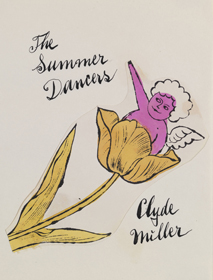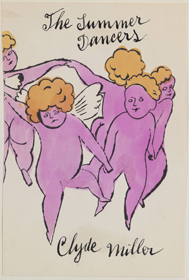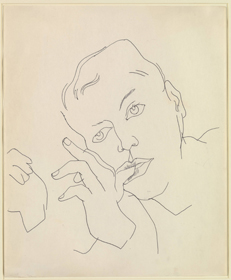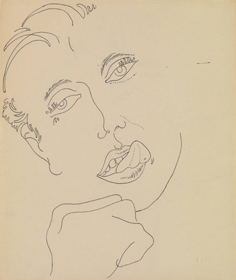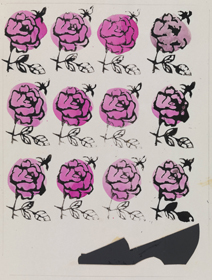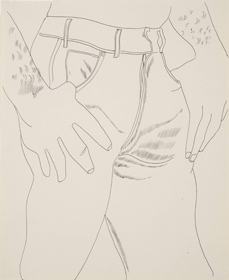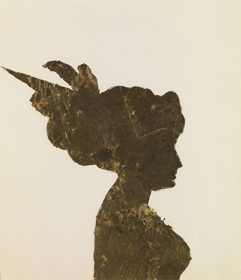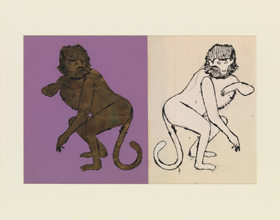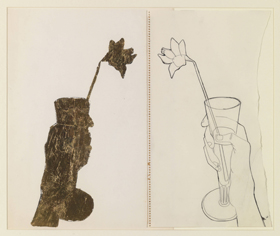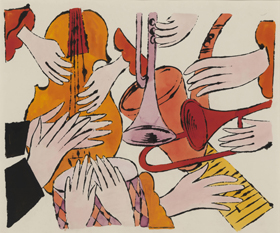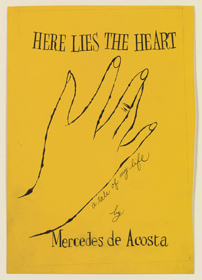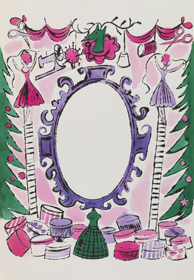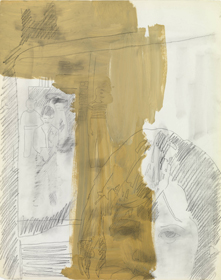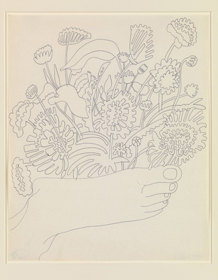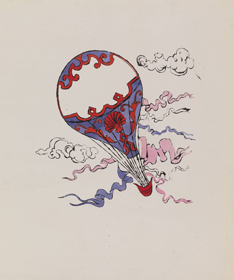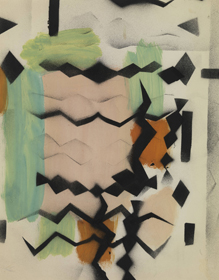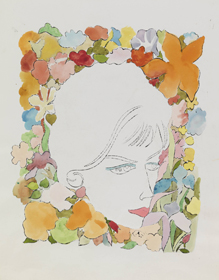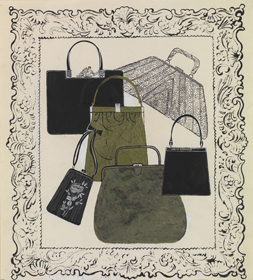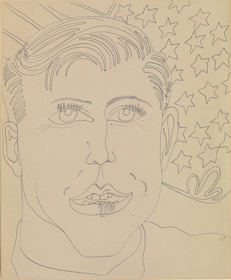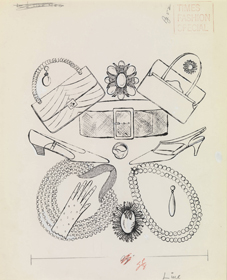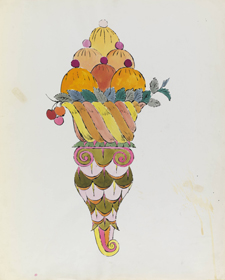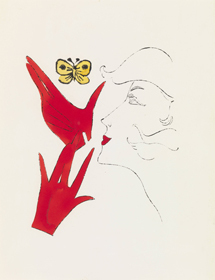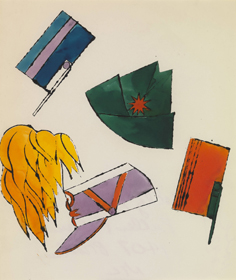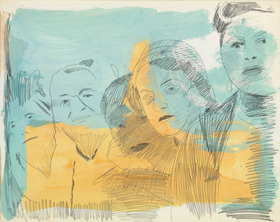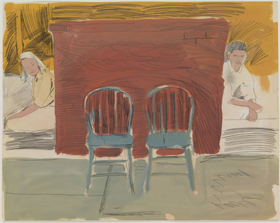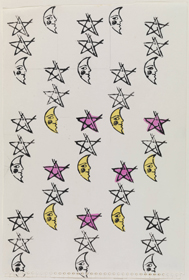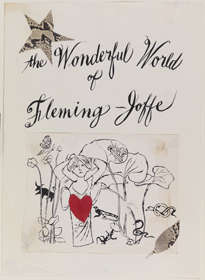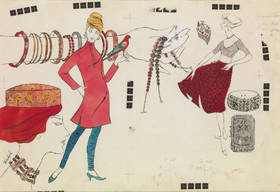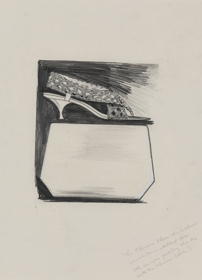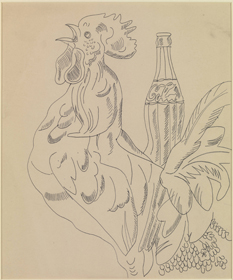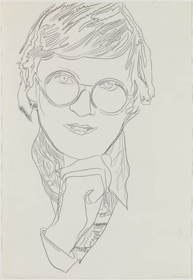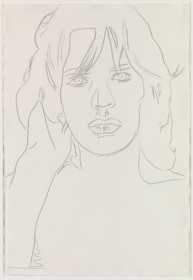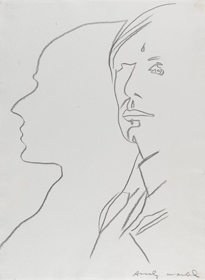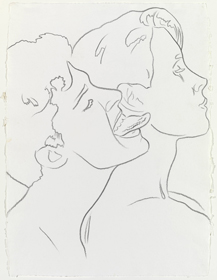Alexandre Iolas, 1972
1972, Acrylic paint and silkscreen on 2 canvases, 1017 x 1017 x 29 mm
© 2025 The Andy Warhol Foundation for the Visual Arts, Inc. / Licensed by DACS, London
AR00230
Man Ray, 1974
1974, Acrylic paint and silkscreen on 2 canvases, ea: 356 x 280 x 20 mm
© 2025 The Andy Warhol Foundation for the Visual Arts, Inc. / Licensed by DACS, London
AR0039
Gilbert and George, 1975
1975, Acrylic paint and silkscreen on 2 canvases, 1022 x 1019 x 21 mm
© 2025 The Andy Warhol Foundation for the Visual Arts, Inc. / Licensed by DACS, London
AR00040
Skulls, 1976
1976, Acrylic paint and silkscreen on 6 canvases, ea: 383 x 483 x 18 mm
© 2025 The Andy Warhol Foundation for the Visual Arts, Inc. / Licensed by DACS, London
AR00609
Self-Portrait with Skull, 1978
1978, Acrylic paint and silkscreen on canvas, 408 x 332 x 20 mm
© 2025 The Andy Warhol Foundation for the Visual Arts, Inc. / Licensed by DACS, London
AR00610
Self-Portrait Strangulation, 1978
1978, Acrylic paint and silkscreen on canvas, 408 x 331 x 18 mm
© 2025 The Andy Warhol Foundation for the Visual Arts, Inc. / Licensed by DACS, London
AR00503
Self-Portrait, 1978
1978, Acrylic paint and silkscreen on canvas, 408 x 333 x 20 mm
© 2025 The Andy Warhol Foundation for the Visual Arts, Inc. / Licensed by DACS, London
AR00501
Joseph Beuys, 1980
1980, Acrylic paint and silkscreen on canvas, Support: 508 x 410 x 23 mm
© 2025 The Andy Warhol Foundation for the Visual Arts, Inc. / Licensed by DACS, London
AR00587
Gun, 1981
1981, Acrylic paint and silkscreen on 2 canvases, ea: 1782 x 2286 x 40 mm
© 2025 The Andy Warhol Foundation for the Visual Arts, Inc. / Licensed by DACS, London
AR00231
Dollar Sign, 1981
1981, Acrylic paint and silkscreen on canvas, 2287 x 1780 x 33 mm
© 2025 The Andy Warhol Foundation for the Visual Arts, Inc. / Licensed by DACS, London
AR00502
Robert Mapplethorpe, 1983
1983, Acrylic paint and silkscreen on canvas, 1017 x 1017 x 35 mm
© 2025 The Andy Warhol Foundation for the Visual Arts, Inc. / Licensed by DACS, London
AR00232
Camouflage, 1986
1986, acrylic paint and silkscreen on 4 canvases, ea: 1830 x 1830 x 33 mm
© 2025 The Andy Warhol Foundation for the Visual Arts, Inc. / Licensed by DACS, London
AR00611
Hamburger, 1985-6
1985-6, Acrylic paint and silkscreen on 2 canvases, ea: 1832 x 2037 x 33 mm
© 2025 The Andy Warhol Foundation for the Visual Arts, Inc. / Licensed by DACS, London
AR00233
Christ $9.98 (negative and positive), 1985-6
1985-6, Acrylic paint and silkscreen on 2 canvases, 510 x 410 x 20 mm
© 2025 The Andy Warhol Foundation for the Visual Arts, Inc. / Licensed by DACS, London
AR00239
Paratrooper Boots, 1985-6
1985-6, Acrylic paint and silkscreen on 2 canvases, ea: 2034 x 1476 x 33 mm
© 2025 The Andy Warhol Foundation for the Visual Arts, Inc. / Licensed by DACS, London
AR00588
Are You Different?, c.1985-6
c.1985-6, Acrylic paint and silkscreen on 2 canvases, ea: 510 x 410 x 20 mm
© 2025 The Andy Warhol Foundation for the Visual Arts, Inc. / Licensed by DACS, London
AR00236
Energy - Power, c.1985-6
c.1985-6, Acrylic paint and silkscreen on 2 canvases, ea: 662 x 509 x 21 mm
© 2025 The Andy Warhol Foundation for the Visual Arts, Inc. / Licensed by DACS, London
AR00237
Map of Eastern U.S.S.R. Missile Bases, c.1985-6
c.1985-6, Acrylic paint and silkscreen on canvas, 1830 x 2032 x 32 mm
© 2025 The Andy Warhol Foundation for the Visual Arts, Inc. / Licensed by DACS, London
AR00235
Repent and Sin No More!, 1985-6
1985-6, Acrylic paint and silkscreen on 2 canvases, 2034 x 1781 x 33 mm
© 2025 The Andy Warhol Foundation for the Visual Arts, Inc. / Licensed by DACS, London
AR00234
The Mark of the Beast, c.1985-6
c.1985-6, Acrylic paint and silkscreen on 2 canvases, ea: 510 x 408 x 19 mm
© 2025 The Andy Warhol Foundation for the Visual Arts, Inc. / Licensed by DACS, London
AR00238
Male Nude, 1987
1987, 4 photographs, gelatin silver print on paper and thread, 711 x 599 mm
© 2025 The Andy Warhol Foundation for the Visual Arts, Inc. / Licensed by DACS, London
AR00299
Male Nude, 1987
1987, 4 photographs, gelatin silver print on paper and thread, 695 x 540 mm
© 2025 The Andy Warhol Foundation for the Visual Arts, Inc. / Licensed by DACS, London
AR00300
Male Nude, 1987
1987, 4 photographs, gelatin silver print on paper and thread, 696 x 540 mm
© 2025 The Andy Warhol Foundation for the Visual Arts, Inc. / Licensed by DACS, London
AR00301
Male Nude, 1987
1987, 4 photographs, gelatin silver print on paper and thread, 711 x 559 mm
© 2025 The Andy Warhol Foundation for the Visual Arts, Inc. / Licensed by DACS, London
AR00298
Cadaver, 1986
1986, 6 photographs, gelatin silver print on paper and thread, 803 x 694 mm
© 2025 The Andy Warhol Foundation for the Visual Arts, Inc. / Licensed by DACS, London
AR00293
Trash Cans, 1986
1986, 4 photographs, gelatin silver print on paper and thread, 698 x 543 mm
© 2025 The Andy Warhol Foundation for the Visual Arts, Inc. / Licensed by DACS, London
AR00297
Grace Jones
1986, 9 photographs, gelatin silver print on paper, 1067 x 838 mm
© 2025 The Andy Warhol Foundation for the Visual Arts, Inc. / Licensed by DACS, London
AR00290
Sunday Brunch, 1986
1986, 4 photographs, gelatin silver print on paper and thread, 539 x 694 mm
© 2025 The Andy Warhol Foundation for the Visual Arts, Inc. / Licensed by DACS, London
AR00295
No Parking, 1986
1986, 4 photographs, gelatin silver print on paper and thread, 539 x 694 mm
© 2025 The Andy Warhol Foundation for the Visual Arts, Inc. / Licensed by DACS, London
AR00296
Venus in Shell, 1986
1986, 4 photographs, gelatin silver print on paper and thread, 700 x 542 mm
© 2025 The Andy Warhol Foundation for the Visual Arts, Inc. / Licensed by DACS, London
AR00294
Grace being painted by Keith, 1986
1986, 6 photographs, gelatin silver print on paper and thread, 695 x 805 mm
© 2025 The Andy Warhol Foundation for the Visual Arts, Inc. / Licensed by DACS, London
AR00291
Dissection Class, 1986
1986, 6 photographs, gelatin silver print on paper and thread, 695 x 805 mm
© 2025 The Andy Warhol Foundation for the Visual Arts, Inc. / Licensed by DACS, London
AR00288
Cough, 1986
1986, 6 photographs, gelatin silver print on paper and thread, 805 x 695 mm
© 2025 The Andy Warhol Foundation for the Visual Arts, Inc. / Licensed by DACS, London
AR00292
I am blind, 1986
1986, 9 photographs, gelatin silver print on paper, 1067 x 838 mm
© 2025 The Andy Warhol Foundation for the Visual Arts, Inc. / Licensed by DACS, London
AR00289
Self-Portrait, 1976-86
1976-86, 6 photographs, gelatin silver print on paper and thread, 698 x 804 mm
© 2025 The Andy Warhol Foundation for the Visual Arts, Inc. / Licensed by DACS, London
AR00286
Statue of Liberty, 1986
1986, 6 photographs, gelatin silver print on paper and thread, 695 x 805 mm
© 2025 The Andy Warhol Foundation for the Visual Arts, Inc. / Licensed by DACS, London
AR00287
Gilbert and George, 1976
1976, 2 photographs, colour, Polaroid, on paper, each: 95 x 72 mm
© 2025 The Andy Warhol Foundation for the Visual Arts, Inc. / Licensed by DACS, London
AR00316
Gilbert and George, 1976
1976, 2 photographs, colour, Polaroid on paper, each: 95 x 72 mm
© 2025 The Andy Warhol Foundation for the Visual Arts, Inc. / Licensed by DACS, London
AR00317
Self-Portrait with Hand to Cheek, 1977-8
1977-8, Photograph, colour, Polaroid on paper, 96 x 72 mm
© 2025 The Andy Warhol Foundation for the Visual Arts, Inc. / Licensed by DACS, London
AR00305
Self-Portrait in Blue Shirt, 1977-8
1977-8, Photograph, colour, Polaroid on paper, 93 x 73 mm
© 2025 The Andy Warhol Foundation for the Visual Arts, Inc. / Licensed by DACS, London
AR00304
Self-Portrait in Interview T-shirt, 1977-8
1977-8, Photograph, colour, Polaroid, on paper, 95 x 72 mm
© 2025 The Andy Warhol Foundation for the Visual Arts, Inc. / Licensed by DACS, London
AR00303
Self-Portrait in Dark Suit, 1977-8
1977-8, Photograph, colour, Polaroid on paper, 94 x 72 mm
© 2025 The Andy Warhol Foundation for the Visual Arts, Inc. / Licensed by DACS, London
AR00302
Self-Portrait in a Dark Suit and Plaid Shirt, 1981
1981, Photograph, colour, Polaroid on paper, 95 x 72 mm
© 2025 The Andy Warhol Foundation for the Visual Arts, Inc. / Licensed by DACS, London
AR00307
Self-Portrait in Dark Suit and Plaid Shirt, 1981
1981, Photograph, colour, Polaroid, on paper, 95 x 72 mm
© 2025 The Andy Warhol Foundation for the Visual Arts, Inc. / Licensed by DACS, London
AR00306
Self-Portrait in Profile with Shadow, 1981
1981, Photograph, colour, Polaroid on paper, 72 x 95 mm
© 2025 The Andy Warhol Foundation for the Visual Arts, Inc. / Licensed by DACS, London
AR00311
Self-Portrait with Platinum Bouffant Wig, 1981
1981, Photograph, colour, Polaroid, on paper, 95 x 72 mm
© 2025 The Andy Warhol Foundation for the Visual Arts, Inc. / Licensed by DACS, London
AR00308
Self-Portrait with Reddish Blonde Wig, 1981
1981, Photograph, colour, Polaroid on paper, 95 x 73 mm
© 2025 The Andy Warhol Foundation for the Visual Arts, Inc. / Licensed by DACS, London
AR00309
Self-Portrait with Platinum Pageboy Wig, 1981
1981, Photograph, colour, Polaroid on paper, 95 x 72 mm
© 2025 The Andy Warhol Foundation for the Visual Arts, Inc. / Licensed by DACS, London
AR00310
Self-Portrait with Fright Wig, 1986
1986, Photograph, colour, Polaroid on paper, 94 x 72 mm
© 2025 The Andy Warhol Foundation for the Visual Arts, Inc. / Licensed by DACS, London
AR00312
Self-Portrait with Fright Wig, 1986
1986, Photograph, colour, Polaroid on paper, 95 x 72 mm
© 2025 The Andy Warhol Foundation for the Visual Arts, Inc. / Licensed by DACS, London
AR00313
Self-Portrait with Fright Wig, 1986
1986, Photograph, colour, Polaroid on paper, 95 x 72 mm
© 2025 The Andy Warhol Foundation for the Visual Arts, Inc. / Licensed by DACS, London
AR00314
Self-Portrait with Fright Wig, 1986
1986, Photograph, colour, Polaroid on paper, 95 x 72 mm
© 2025 The Andy Warhol Foundation for the Visual Arts, Inc. / Licensed by DACS, London
AR00315
Cano, 1948
1948, Ink and gouache on paper, 230 x 154 mm
© 2025 The Andy Warhol Foundation for the Visual Arts, Inc. / Licensed by DACS, London
AR00265
A Field of Blue Children, 1951-2
1951-2, Ink and dye on paper, 625 x 480 mm
© 2025 The Andy Warhol Foundation for the Visual Arts, Inc. / Licensed by DACS, London
AR00589
"The Nation's Nightmare", 1951
1951, Ink, graphite and acetate on paper, 371 x 345 mm
© 2025 The Andy Warhol Foundation for the Visual Arts, Inc. / Licensed by DACS, London
AR00240
"Pistols for Two", 1951
1951, Ink, graphite and tempera on paper, 223 x 263 mm
© 2025 The Andy Warhol Foundation for the Visual Arts, Inc. / Licensed by DACS, London
AR00261
Embracing Couple with Marbleised Background, 1952
1952, Ink and watercolour on paper, 300 x 356 mm
© 2025 The Andy Warhol Foundation for the Visual Arts, Inc. / Licensed by DACS, London
AR00241
Female Bust, Two Children with Marbleised Background, 1952
1952, Ink and watercolour on paper, 688 x 560 mm
© 2025 The Andy Warhol Foundation for the Visual Arts, Inc. / Licensed by DACS, London
AR00242
"The Runaway Pigeon", 1953
1953, Ink, watercolour and graphite on paper, 272 x 237 mm
© 2025 The Andy Warhol Foundation for the Visual Arts, Inc. / Licensed by DACS, London
AR00244
Musical Notes and Sprite Faces, 1953
1953, Ink and dye on paper, 454 x 365 mm
© 2025 The Andy Warhol Foundation for the Visual Arts, Inc. / Licensed by DACS, London
AR00246
"The Runaway Pigeon", 1953
1953, Ink on paper on ink on paper, 280 x 205 mm
© 2025 The Andy Warhol Foundation for the Visual Arts, Inc. / Licensed by DACS, London
AR00266
"A Hand of Bridge", 1953
1953, Ink, graphite and dye on paper, 320 x 238 mm
© 2025 The Andy Warhol Foundation for the Visual Arts, Inc. / Licensed by DACS, London
AR00245
"The Runaway Pigeon", 1953
1953, Ink, watercolour and graphite on paper, 269 x 295 mm
© 2025 The Andy Warhol Foundation for the Visual Arts, Inc. / Licensed by DACS, London
AR00243
Chess Player, 1954
1954, Ink and dye on paper, 534 x 433 mm
© 2025 The Andy Warhol Foundation for the Visual Arts, Inc. / Licensed by DACS, London
AR00248
"Town and Country", 1954
1954, Ink, graphite, gouache, paper and dye on paper, 328 x 247 mm
© 2025 The Andy Warhol Foundation for the Visual Arts, Inc. / Licensed by DACS, London
AR00247
Young Man with Heart, 1954
1954, Ink, gold paint and dye on paper, 495 x 355 mm
© 2025 The Andy Warhol Foundation for the Visual Arts, Inc. / Licensed by DACS, London
AR00260
Happy Butterfly Day, 1955
1955, Ink, graphite, and dye on paper, 327 x 455 mm
© 2025 The Andy Warhol Foundation for the Visual Arts, Inc. / Licensed by DACS, London
AR00249
Tondo (Butterflies), 1955
1955, Ink, graphite and dye on paper, 660 x 530 mm
© 2025 The Andy Warhol Foundation for the Visual Arts, Inc. / Licensed by DACS, London
AR00250
Blue Shoe, 1955
1955, Ink and dye on paper, 327 x 970 mm
© 2025 The Andy Warhol Foundation for the Visual Arts, Inc. / Licensed by DACS, London
AR00251
Foot with Cat, 1955-57
1955-57, Ink on paper, 424 x 350 mm
© 2025 The Andy Warhol Foundation for the Visual Arts, Inc. / Licensed by DACS, London
AR00259
Boy with Flowers, 1955-57
1955-57, Ink on paper, 425 x 351 mm
© 2025 The Andy Warhol Foundation for the Visual Arts, Inc. / Licensed by DACS, London
AR00271
Resting Boy, 1955-57
1955-57, Ink on paper, 418 x 345 mm
© 2025 The Andy Warhol Foundation for the Visual Arts, Inc. / Licensed by DACS, London
AR00272
"The Summer Dancers", 1955
1955, Ink and dye on paper, 226 x 319 mm
© 2025 The Andy Warhol Foundation for the Visual Arts, Inc. / Licensed by DACS, London
AR00262
"The Summer Dancers", 1955
1955, Ink and dye on paper, 215 x 145 mm
© 2025 The Andy Warhol Foundation for the Visual Arts, Inc. / Licensed by DACS, London
AR00263
Boy with Thumb in Mouth, 1956
1956, Ink on paper, 435 x 357 mm
© 2025 The Andy Warhol Foundation for the Visual Arts, Inc. / Licensed by DACS, London
AR00591
Boy Licking his Lips, 1956
1956, Ink on paper, 420 x 353 mm
© 2025 The Andy Warhol Foundation for the Visual Arts, Inc. / Licensed by DACS, London
AR00590
Shoes and Roses, 1956
1956, Paper on ink, dye and graphite on paper, 456 x 326 mm
© 2025 The Andy Warhol Foundation for the Visual Arts, Inc. / Licensed by DACS, London
AR00268
Male Torso, 1956
1956, Ink on paper, 425 x 345 mm
© 2025 The Andy Warhol Foundation for the Visual Arts, Inc. / Licensed by DACS, London
AR00269
Woman with Hat, 1957
1957, Gold leaf and ink on paper, 585 x 508 mm
© 2025 The Andy Warhol Foundation for the Visual Arts, Inc. / Licensed by DACS, London
AR00281
Baboon, 1957
1957, Ink, gold leaf, graphite and gouache on paper, 450 x 711 mm
© 2025 The Andy Warhol Foundation for the Visual Arts, Inc. / Licensed by DACS, London
AR00252
Hand Holding Glass with Daffodil, 1957
1957, Ink, gold leaf and graphite on paper, 460 x 599 mm
© 2025 The Andy Warhol Foundation for the Visual Arts, Inc. / Licensed by DACS, London
AR00253
Instruments with Hands, 1957
1957, Ink and dye on paper on board, 320 x 382 mm
© 2025 The Andy Warhol Foundation for the Visual Arts, Inc. / Licensed by DACS, London
AR00612
"Here Lies the Heart", 1957
1957, Ink and graphite on paper, 307 x 215 mm
© 2025 The Andy Warhol Foundation for the Visual Arts, Inc. / Licensed by DACS, London
AR00264
Christmas Sewing Theme, 1957
1957 Ink and dye on paper 390 x 230 mm
© 2025 The Andy Warhol Foundation for the Visual Arts, Inc. / Licensed by DACS, London
AR00267
Head of a Girl and Children, 1958-61
1958-61, Graphite and gouache on paper, 735 x 580 mm
© 2025 The Andy Warhol Foundation for the Visual Arts, Inc. / Licensed by DACS, London
AR00282
Foot with Flowers, 1958
1958, Ink on paper, 430 x 351 mm
© 2025 The Andy Warhol Foundation for the Visual Arts, Inc. / Licensed by DACS, London
AR00258
Hot Air Balloon, 1958
1958, Ink and dye on paper, 467 x 362 mm
© 2025 The Andy Warhol Foundation for the Visual Arts, Inc. / Licensed by DACS, London
AR00254
Abstract Stencilled Images, 1958
1958, Sprayed paint and gouache on paper, 595 x 470 mm
© 2025 The Andy Warhol Foundation for the Visual Arts, Inc. / Licensed by DACS, London
AR00273
Head with Flowers, 1958
1958, Ink and dye on paper, 382 x 336 mm
© 2025 The Andy Warhol Foundation for the Visual Arts, Inc. / Licensed by DACS, London
AR00274
Six Handbags, 1958
1958, Ink and Tempera on paper, 340 x 303 mm
© 2025 The Andy Warhol Foundation for the Visual Arts, Inc. / Licensed by DACS, London
AR00270
Boy with Stars and Stripes, 1959
1957, Ink, gold leaf, graphite and gouache on paper, 450 x 711 mm
© 2025 The Andy Warhol Foundation for the Visual Arts, Inc. / Licensed by DACS, London
AR00277
Fashion Accessories, 1959
1959, Ink on paper, 545 x 450 mm
© 2025 The Andy Warhol Foundation for the Visual Arts, Inc. / Licensed by DACS, London
AR00278
Ice Cream Dessert, 1959
1959, Ink and dye on paper, 695 x 428 mm
© 2025 The Andy Warhol Foundation for the Visual Arts, Inc. / Licensed by DACS, London
AR00255
Head with Red Gloves and Butterfly, 1959
1959, Ink and dye on paper, 403 x 315 mm
© 2025 The Andy Warhol Foundation for the Visual Arts, Inc. / Licensed by DACS, London
AR00275
Hats, 1959
1959, Ink and dye on paper, 472 x 400 mm
© 2025 The Andy Warhol Foundation for the Visual Arts, Inc. / Licensed by DACS, London
AR00280
People , 1960-62
1960-62, Graphite, dye and gouache on paper, 585 x 735 mm
© 2025 The Andy Warhol Foundation for the Visual Arts, Inc. / Licensed by DACS, London
AR00283
Man and Woman and Two Chairs, 1960-62
1960-62, Graphite and gouache on paper, 583 x 735 mm
© 2025 The Andy Warhol Foundation for the Visual Arts, Inc. / Licensed by DACS, London
AR00284
Stars and Half Moons, 1960
1960, Ink and dye on paper, 210 x 207 mm
© 2025 The Andy Warhol Foundation for the Visual Arts, Inc. / Licensed by DACS, London
AR00257
"The Wonderful World of Fleming Joffe", 1960
1960 Ink and snakeskin on paper, 480 x 340 mm
© 2025 The Andy Warhol Foundation for the Visual Arts, Inc. / Licensed by DACS, London
AR00256
Female Figures and Fashion Accessories, 1960
1960, Ink, printed paper and dye on paper on board, 430 x 628 mm
© 2025 The Andy Warhol Foundation for the Visual Arts, Inc. / Licensed by DACS, London
AR00285
Shoe and Handbag, 1960
1960, Graphite and gouache on paper, 280 x 358 mm
© 2025 The Andy Warhol Foundation for the Visual Arts, Inc. / Licensed by DACS, London
AR00279
Rooster with Coca Cola Bottle, 1960
1960, Ink on paper, 418 x 348 mm
© 2025 The Andy Warhol Foundation for the Visual Arts, Inc. / Licensed by DACS, London
AR00276
David Hockney, 1974
1974, Graphite on paper, 1040 x 710 mm
© 2025 The Andy Warhol Foundation for the Visual Arts, Inc. / Licensed by DACS, London
AR00592
Mick Jagger, 1975
1975, Graphite on paper, 1030 x 700 mm
© 2025 The Andy Warhol Foundation for the Visual Arts, Inc. / Licensed by DACS, London
AR00593
The Shadow, 1981
1981, Graphite on paper, 800 x 610 mm
© 2025 The Andy Warhol Foundation for the Visual Arts, Inc. / Licensed by DACS, London
AR00594
Tongue in Ear, 1980
1980, Graphite on paper, 800 x 600 mm
© 2025 The Andy Warhol Foundation for the Visual Arts, Inc. / Licensed by DACS, London
AR00595
